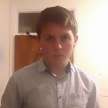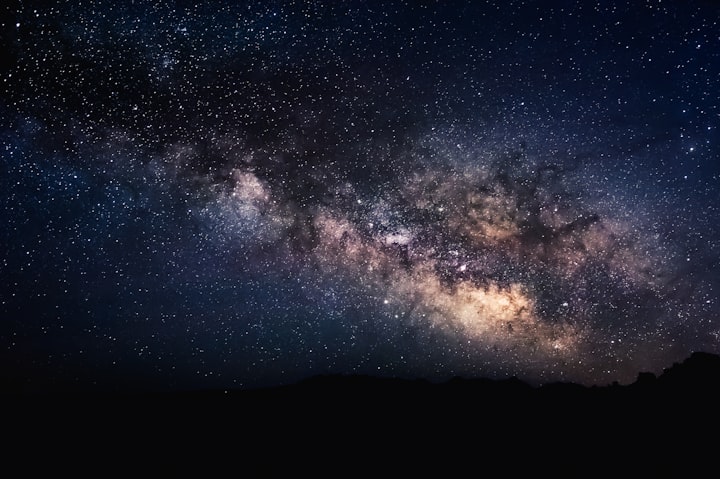A History of Gravitational Waves
From Einstein to LIGO

14th September 2015. A 4 kilometer long arm forming part of the Laser Interferometer Gravitational-Wave Observatory (LIGO) changed its length by one ten-thousandth the width of a proton, due to a distortion in spacetime, disturbing a laser beam housed inside. Computers immediately detected the mind bendingly miniscule change, sending an automatically generated email containing the observed data to a postdoctoral researcher by the name of Marco Drago working in the Max Planck Institute for Gravitational Physics in Hannover, Germany. Marco’s job was to monitor LIGO readings examined the data to rule out any error or “dummy signal” used for testing purposes. Within a few days news of the detection had been leaked to the world astrophysics community and after the observation had been definitively confirmed an official press conference on the 11th of February 2016 revealed to the world the first observation of a gravitational wave on earth by LIGO.
Over one billion years earlier, two black holes spun ever closer to one another until merging into one, an act of celestial violence that threw out massive ripples in the very fabric of spacetime, gravitational waves carrying an incomprehensible amount of energy at the speed of light. As the waves travelled they lost energy, until becoming but mere hints of their former selves. After more than one billion light years of travel the waves passed through earth. Lying in wait a complicated system of lasers and partially reflecting mirrors that form the LIGO experiment were disturbed. The bending of spacetime slightly moved the laser beam causing destructive interference that was recorded by computers. For the first time humans had detected what scientific giant Albert Einstein had theorized almost 100 years before in his General Theory of Relativity of 1916.
Within his Special and General Theories of Relativity, Einstein had described the universe in terms of spacetime, that is, all matter/energy (matter/energy corresponding with one another according to the equation E=mc²) in the universe exist on a flexible fabric consisting of three dimensions of space and one dimension of time. Understanding this is vital to understanding gravitational waves. Einstein drew his inspiration from the world around him, and in that spirit you can imagine spacetime as being like a pond and stars of being like balls floating on the surface. When a ball is dragged through the water, it creates ripples. As a ripple travels further from its source it loses energy and eventually fades away. This is practically identical to the nature of a gravitational wave. If you drag the ball through the water in a circular motion, it throws out ripples in a circular manner, and this is the type of gravitational wave that LIGO first detected when the two black holes described earlier spun ever closer to one another and eventually collided. At this point you might ask why they didn’t simply circle around one another forever like a binary star system where two stars orbit each other. Keep this question at the back of your mind until we get to the section on “The Sticky Bead Argument,” as it is vital to understanding the importance of the study of gravitational waves.
Although Einstein had created a theory and described gravitational waves, there was still no physical evidence for their existence. The search would be long and hard, both in theoretical terms and in terms of practical detection. Einstein himself had doubts (due to what we now know was an error in his calculations), and at first believed that in a full application of General Relativity that gravitational waves would be impossible. In 1936 he wrote to a friend that “I arrive at the interesting result that gravitational waves do not exist.” In that year he also wrote an article in the scientific journal Physical Review on the subject of gravitational waves, concluding again that they didn’t exist. Nevertheless he soon changed his opinion after realizing his mathematical mistake and became convinced of their reality.
With the acceptance of gravitational waves as a real phenomenon, discussion moved on to describing precisely how gravitational waves act and influence the universe around us. One of the major events in the field of gravitational physics was held in 1957 over a six day period, the Chapel Hill Conference, now known as the GR1 (General Relativity 1) Conference. During the conference, now legendary physicists like Richard Feynman helped answer questions like, “Can gravitational waves propagate energy?” Feynman himself anonymously submitted a thought experiment under the name of “Mr. Smith” to settle this question once and for all. It is known as “The Sticky Bead Argument,” and explains the idea that a sticky bead attached to a rigid rod oriented crossways to an incoming gravitational wave would, when the wave reached the bead, cause the bead to move back and forwards, creating friction and therefore heat energy. From this “Mr. Smith” concluded that gravitational waves could accordingly send energy from one place to another. If you recall the earlier section on the nature of gravitational waves described through the analogy of balls floating in a pond you will remember that as the two black holes spun ever closer towards one another they gave off gravitational waves. As Feynman, a.k.a “Mr. Smith” showed us gravitational waves bring energy from one place to another. If energy appears in one place, it has to have come from another, and so with each gravitational wave emitted from the black holes, more and more energy was lost by them to the infinity of space. As the two black holes lost more and more energy, they slowed down until they were unable to maintain stable orbits around one another, and so collided and merged. You can see from this that Feynman’s thought experiment helps physicists explain many similar events that take place across the universe between different bodies. This thought experiment is one achievement among many given to us by the Chapel Hill Conference.
Despite the great breakthroughs in the theoretical study of gravitational waves that the Chapel Hill Conference gave us, there was still no actual proof of their existence. In the 1960s a physicist named Joseph Weber built a detector operating on the idea that a huge aluminium cylinder encountering gravitational waves would vibrate. The cylinders were suspended from wires and housed in a vacuum to isolate them from outside variables like earthquakes but even so due to the fact that gravitational waves upon reaching earth would have only an unimaginably miniscule effect on the cylinder (as they lose almost all of their original energy on the journey from the wave source, and only weakly influence matter anyway), Weber’s results were quickly cast into doubt as his detections of gravitational waves were so often they would have described a Milky Way losing so much energy/mass to the waves that the galaxy simply could not have existed to the present day.
The first non-theoretical evidence of gravitational waves came when two American physicists by the names of Joseph H. Taylor and Russell A. Hulse in 1974 discovered for the first time a binary pulsar using the Arecibo radio telescope in Puerto Rico, until 2016 the largest radio telescope in the world. Pulsars are neutron stars that emit a beam of electromagnetic radiation, doing this in an extremely regular pulsing fashion as often as a few milliseconds or seconds as they spin, in a manner similar to the way a lighthouse operates. As the lighthouse lamp spins, an observer outside the lighthouse will see a regular flash. The binary pulsar discovered by Taylor and Hulse (known as the Hulse-Taylor Binary) orbits together with a neutron star in an elliptical orbit, like an oval. Taylor and Hulse used the pulsing phenomenon as a sort of clock to time how often the pulsar reached the point on its orbit closest to the neutron star (called the “periastron or periapsis”). From 1974 to 1982 they measured this time, and saw that it was getting shorter by 76 millionths of a second every year. If the time had decreased, that must surely mean that the distance travelled was shorter, and therefore the oval orbit was getting smaller. They realized that the oval orbit could only get shorter if the pulsar was losing energy in the form of gravitational waves, and therefore slowing down. Even if they hadn’t seen gravitational waves themselves, they had certainly observed the effects of the waves. In 1993 Taylor and Hulse won the Nobel Prize in Physics for their discovery.
The next obvious step was LIGO. Even as late as the 1980s laser technology was not developed enough for the detection of the minute distortions in spacetime caused by gravitational waves. On top of this there was very little interest in the scientific community on the topic. As far as many scientists were concerned, gravitational waves had not been proven. It took some years after the discoveries of Taylor and Hulse for momentum to build on a project to definitively, once and for all settle the matter. In 1994 the NSF (National Science Foundation), a US government agency decided to fund LIGO, unveiled their most ambitious and expensive project ever. Construction was finished in the new millennium with LIGO being turned on for the first time in 2002, and the rest is history.
But scientists should not be and are not satisfied with simply proving the existence of gravitational waves. The next step is to analyze and delve into the deeper aspects of this fascinating phenomena, as vital as it is to understanding our universe. In 2015 the European Space Agency launched a highly-dedicated spacecraft known as the LISA (Laser Interferometer Space Antenna) Pathfinder to test out the technology for a later mission known as eLISA (Evolved Laser Interferometer Space Antenna) with an estimated launch date of 2034. eLISA will consist of a number of similar spacecraft in roughly equidistant orbit around the sun. In a manner similar to LIGO, laser beams will connect the spacecraft, and due to the great distance between the spacecraft (millions of kilometers), the experiment would be so massive (in fact the largest ever conducted) that any interference of the beam by gravitational waves will give results of greater precision than LIGO operators could ever dream of.
As you can see, the study of gravitational waves spans across many fields outside of gravitational physics itself, from astrophysics to the engineering and operation of new spacecraft and more. It’s a sometimes complicated and frustrating field but one I hope you can all appreciate for its supreme importance in the universe.
About the Creator
Devon Keogh
I'm a student writer, published in two anthologies and an international student science magazine "Out to the Limits - The Scientists".
Soy un literato estudiante publicado en dos antologías y una revista internacional de estudiantes






Comments
There are no comments for this story
Be the first to respond and start the conversation.